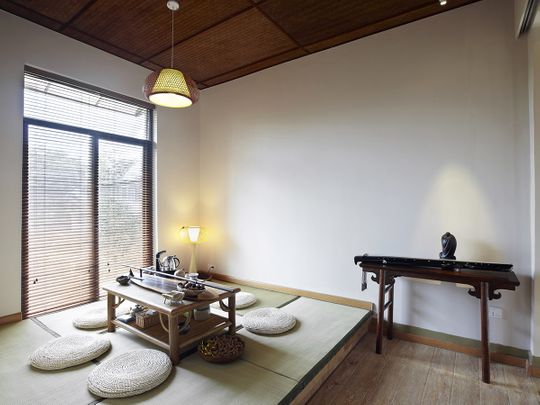
Highlights
Japanese minimalism is based on balance, beauty, utility and tranquillity — concepts that can be embraced easily in our own lives
Feted Italian fashion designer Giorgio Armani is so enamoured by Japanese minimalism, he recently declared, “I would even go so far as to say the Japanese are more Armani than Armani.” In his op-ed piece in The Guardian, the designer wrote an ode to the minimalistic edict of Japan that ties tradition with modernity, and evolves with time without giving into trends.
Extreme minimalist Fumio Sasaki takes the concept of Japanese simplicity several notches above decluttering queen Marie Kondo’s KonMarie method: he advocates the use of only 10 per cent of all possessions and getting rid of the rest. The Japanese author of Goodbye, Things spent five years practicing what he now preaches, and lives off a capsule wardrobe of three shirts, four pairs of trousers, and four pairs of socks.
“Whether we live alone or with other people, few acknowledge the presence of another roommate,” Sasaki writes in his bestselling book. “This roommate is named Things and the space that Things occupies is typically a lot larger than the space people have for themselves.”
Dubai resident Ivan Stanley, who has been hosted in almost a dozen Japanese homes during his annual yoga workshops, says this lack of things is more copious and obvious with every visit he makes to the country. “I have never seen a bed in any Japanese home,” he says. “They only use combinations of futons that can be folded, tatami mats that can be rolled, and duvets.”
Japanese minimalism is not merely fad or fashion, Stanley says, and differs from its Scandinavian counterpart with one outstanding factor — utility. “In the bathroom for instance, the wash basin is built atop the cistern, so that water is constantly recycled. Meanwhile, the flush has three settings with adjustable water pressure. “Hardly anyone has bathtubs, but even in seemingly self-indulgent homes, they are used by every member of the family until a single filling of hot water runs cold.”
Total self-control
While minimalism may sound like a new-age concept, its roots in Japan have been laid — and strengthened — over centuries. The Edo era (1603 and 1868) is a starting point. The ruling Shogun built an elaborate but strict social structure based on moral purity, and over their 250-year reign, dictated how the four divisions of Japanese society could live — and what they could own.
Japan’s geographical and geological factors have also played a critical role in shaping public perspective, with its people long having to face space and resource constraints.
To compound this, the unalterable reality and unforgiving nature of frequently occurring disasters such as tsunamis and earthquakes make it both imprudent and impractical to own too many possessions. And finally, the Zen school of Buddhism prescribes that spiritual enlightenment be attained in the void of selfish desires and materialistic possessions: by consuming less you can stop comparing yourself to others and feel content.
The main doctrines
While the lifestyle of a pious Buddhist monk may not hold appeal to all — too much folding, too little water — the world is taking greater heed of eliminating what we have perceived as need.
Many global trends lend this concept credence: the tiny house movement (residences that occupy 400 metres or less), zero-mile gastronomy (food grown only in immediate environs), anti-fast fashion (avoidance of high-speed, low-value apparel) and Project 333 (wearing only 33 items for three months).
On a realistic note, practicing minimalism may come easier with the understanding of some of their cultural doctrines.
* Danshari is a three-pronged strategy of refuse, separate and dispose. Based on the principles of yoga, it simply means getting rid of many things and then loving only what is left.
* Wabi-Sabi is the joyful acceptance of the incomplete, the imperfect and the impermanent. The use of natural materials and getting used to the patina of time will help find both, flair and fair balance.
* Ma, a concept applicable to all aspects of life, combines an interval in time and an emptiness in space, to celebrate gaps, voids and emptiness. In living spaces, it emphasises what should be cherished — not things, but the space and time between them.
Adaptation
Hideko Yamashita, the popular Japanese author of DanShaRi, also delivers lectures around the world on her subtraction solution. “Age, gender, employment, ethnicity or nationality does not matter. It is a necessary active philosophy for anyone. Before thinking about where to begin or how to begin, have the awareness to get rid of the things that are not necessary to you right now,” she told Napost.com.
“A good start is to ensure that simplicity dovetails with practicality,” says Stanley, who personifies both. Living off a backpack for about nine months of the year as he travels around the world, his efficient mobile wardrobe consists of one sweater, a pair of all-terrain shoes, two pairs of jeans and shorts, and a handful of white shirts.




